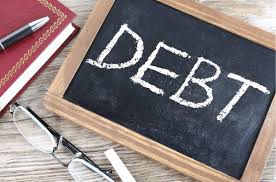In the intricate landscape of personal finance, understanding the various types of debts is crucial for making informed financial decisions. From the distinction between secured and unsecured debts to the nuances of revolving and installment debts, this comprehensive guide unravels the complexities, providing insights into the different forms of debts and their impact on credit, financial health, and wealth building.
Unveiling the Tapestry: Types of Personal Debt
Secured Debt vs. Unsecured Debt
One of the fundamental distinctions in personal debt lies in whether the debt is secured or unsecured. Secured debts require collateral, tangible assets that serve as a guarantee for the loan. On the other hand, unsecured debts do not necessitate collateral, relying solely on the borrower’s creditworthiness.
Examples of Secured Debt:
- Car Loans: The vehicle itself serves as collateral, and failure to repay may result in repossession.
- Mortgages: Real estate properties act as collateral, providing security for the loan.
Examples of Unsecured Debt:
- Credit Cards: These typically don’t require collateral, and approval is based on the borrower’s creditworthiness.
- Medical Bills: Unsecured debts often arise from medical expenses and may be negotiated with healthcare providers.
Categorizing Debts by Repayment: Revolving vs. Installment Debt
Revolving Debt
Revolving debt is characterized by flexibility. Once the borrower pays down the balance, the credit line becomes available for reuse. This cyclical nature distinguishes revolving debt from its counterpart, installment debt.
Examples of Revolving Debt:
- Credit Cards: Borrowers can use credit cards for various purchases and pay down the balance monthly.
- Home Equity Lines of Credit (HELOC): Similar to credit cards, HELOCs allow borrowing against the equity in a home.
Installment Debt
Installment debt involves a fixed sum provided to the borrower, repaid through regular, predetermined payments. This structured approach contrasts with the flexible nature of revolving debt.
Examples of Installment Debt:
- Mortgages: Homebuyers receive a lump sum to purchase a home and repay through fixed monthly mortgage payments.
- Student Loans: Educational expenses are covered with a loan repaid through fixed installments.
Exploring Other Dimensions of Debt
Mortgages, Student Loans, Auto Loans, and Personal Loans
Beyond the broad categories, specific types of debts cater to distinct needs and purposes. Mortgages facilitate homeownership, student loans support education, auto loans finance vehicle purchases, and personal loans offer financial flexibility.
Corporate Debt
Companies, too, engage in borrowing through corporate debt. Issued in the form of bonds, corporate debt allows businesses to raise capital for expansion, operations, or other financial needs.
The Impact of Debt: Navigating Credit, Financial Health, and Wealth Building
Credit Score Conundrum
Debt plays a pivotal role in shaping a borrower’s credit score, a numerical representation of creditworthiness. Timely payments enhance the score, while defaults or late payments may lead to a decline.
Good Debt vs. Bad Debt
Distinguishing between good and bad debt hinges on the interest rate and potential return on investment. Mortgages and student loans, for example, are often considered good debts due to the potential for asset appreciation or increased earning capacity. High-interest credit card debt, conversely, is often viewed as bad debt.
Seeking Financial Guidance
In the face of mounting debt, seeking advice from a financial advisor becomes paramount. These professionals can provide tailored guidance, helping borrowers navigate challenges, explore debt repayment strategies, and make informed decisions aligned with their financial goals.
In Conclusion: Weaving a Financial Narrative
As individuals traverse the intricate tapestry of debts, understanding the nuances becomes a compass for financial well-being. Whether securing a mortgage for a dream home or managing credit card balances, the types of debts and their impacts are threads in the broader narrative of personal finance. By unraveling the intricacies and seeking informed guidance, borrowers can weave a financial narrative that aligns with their aspirations and leads to lasting wealth building.

